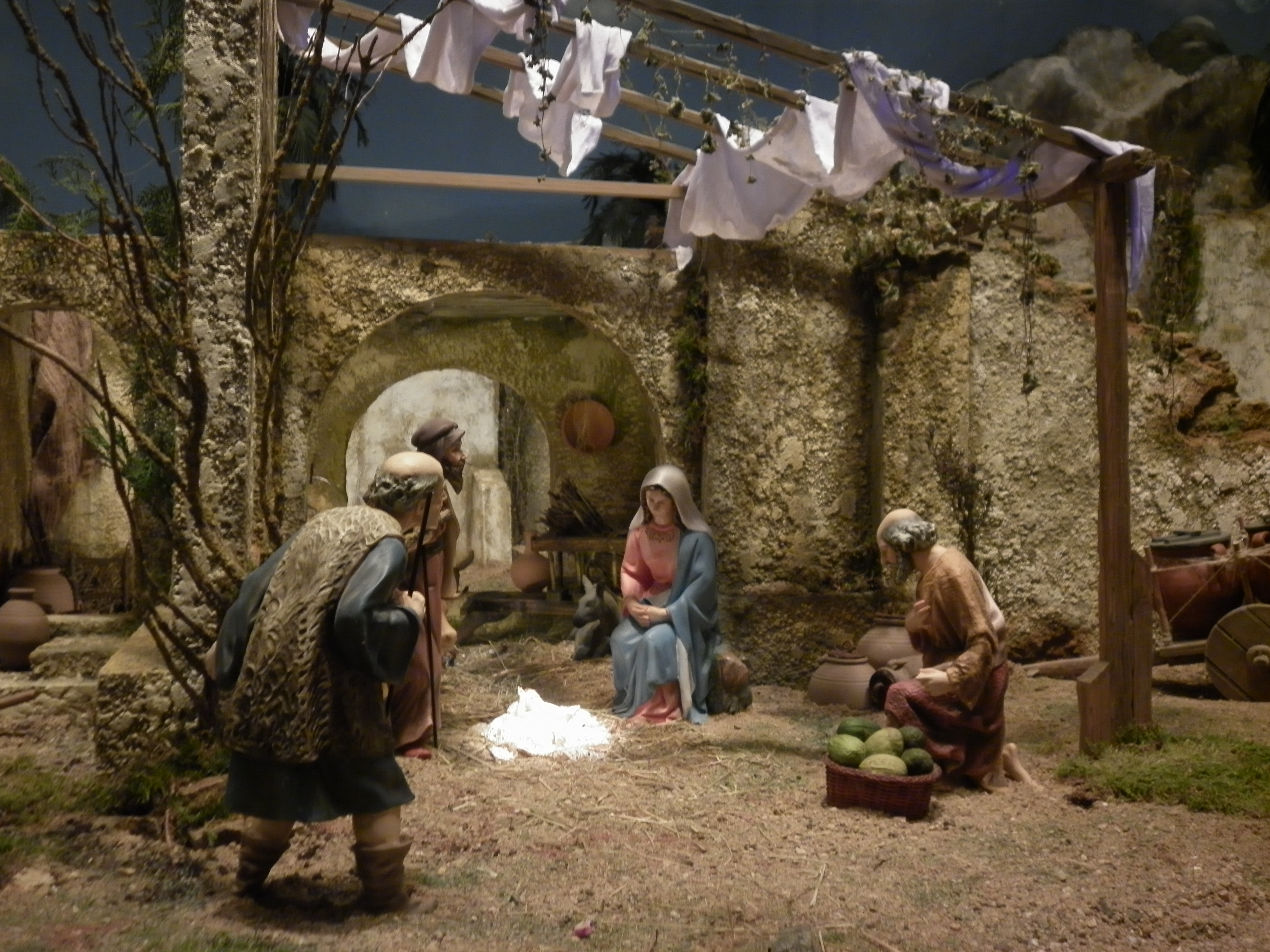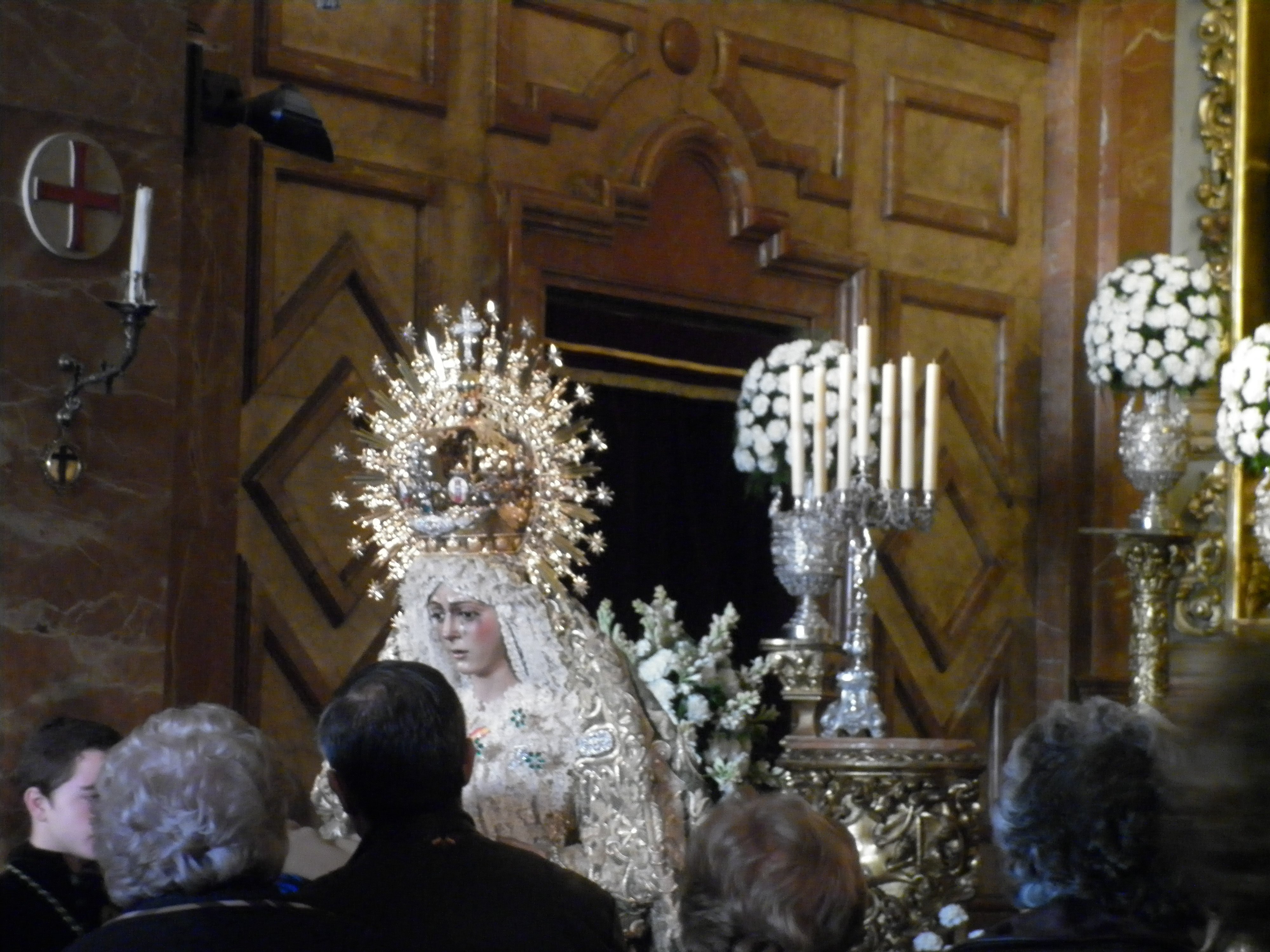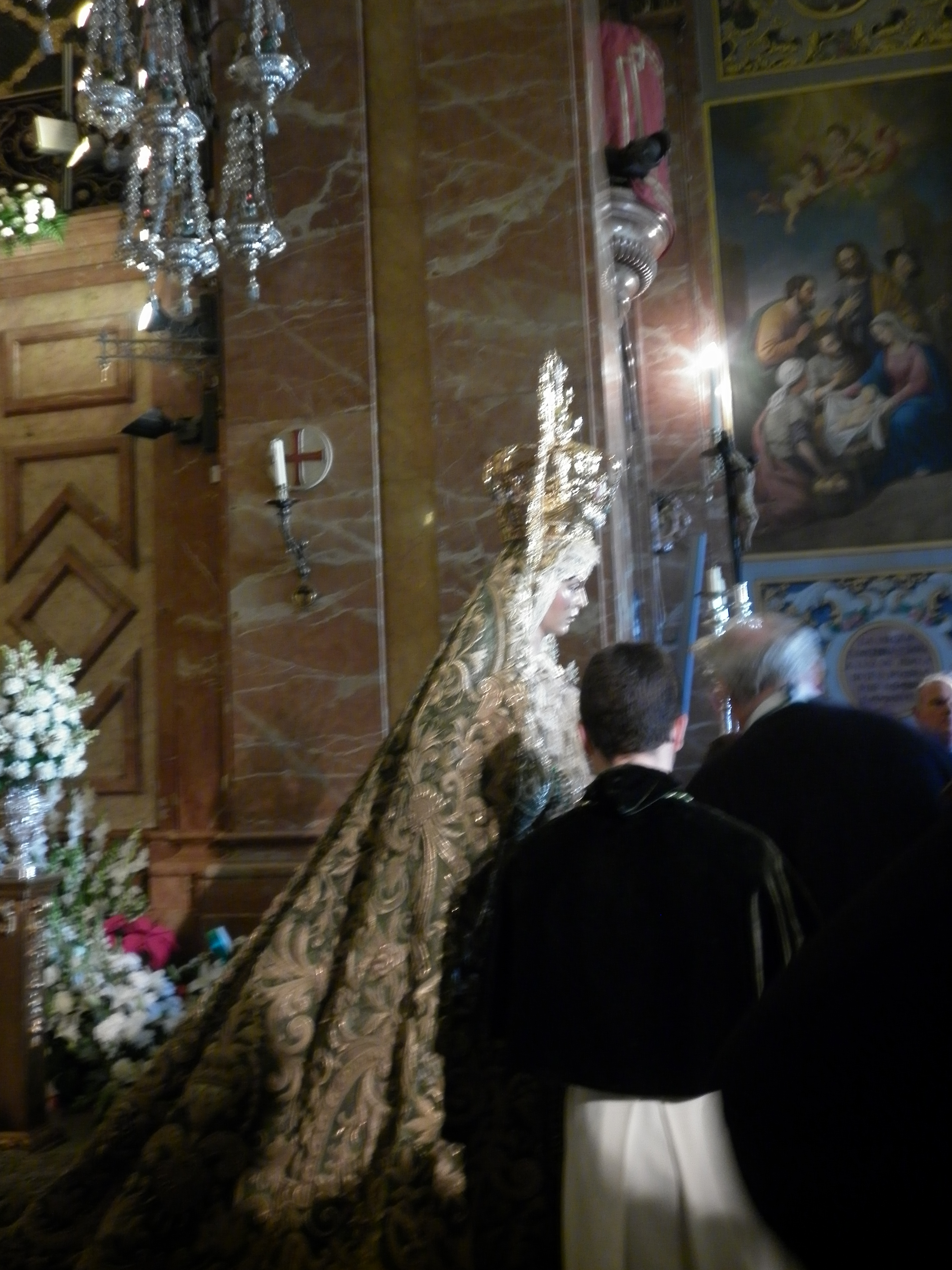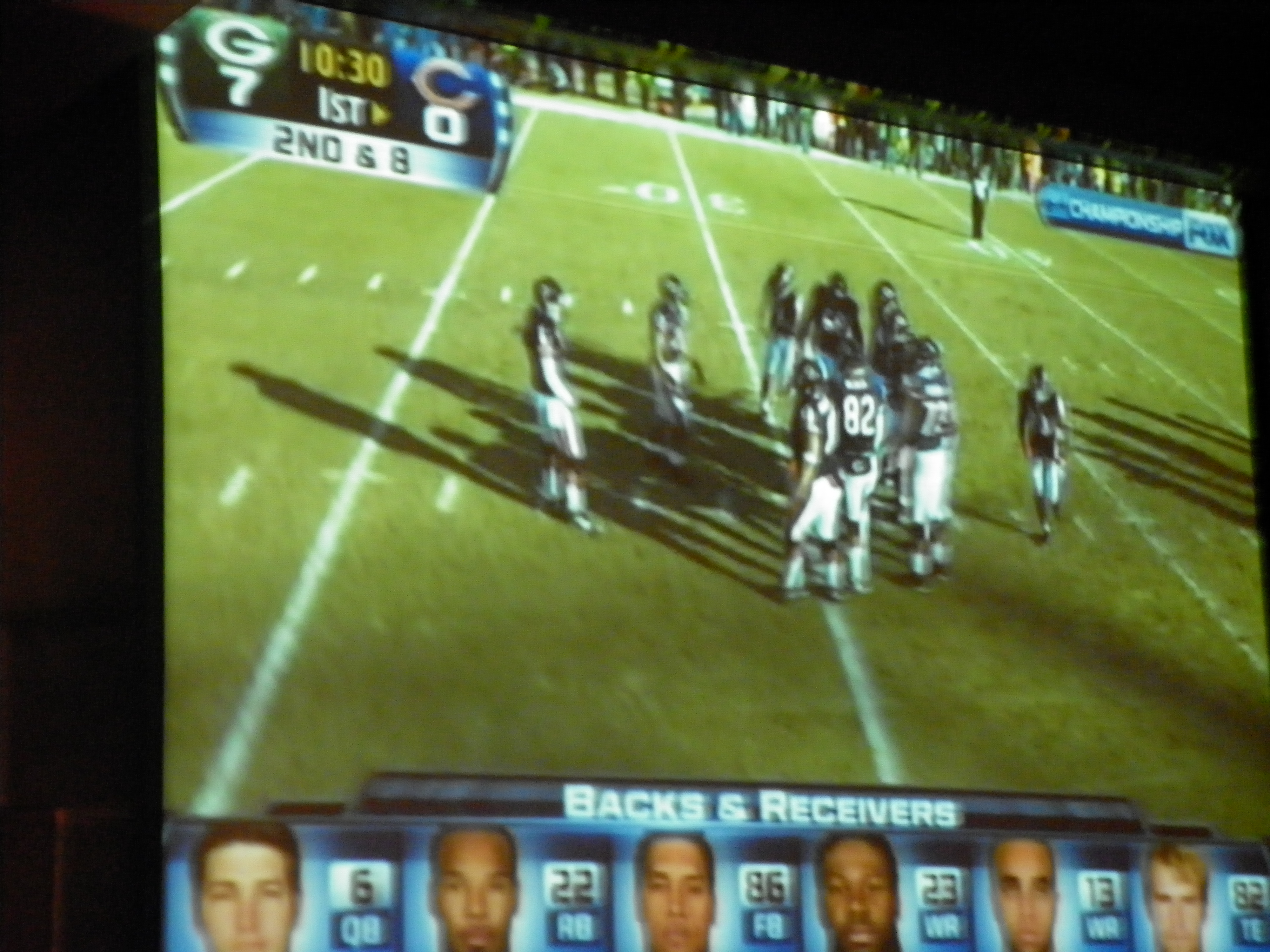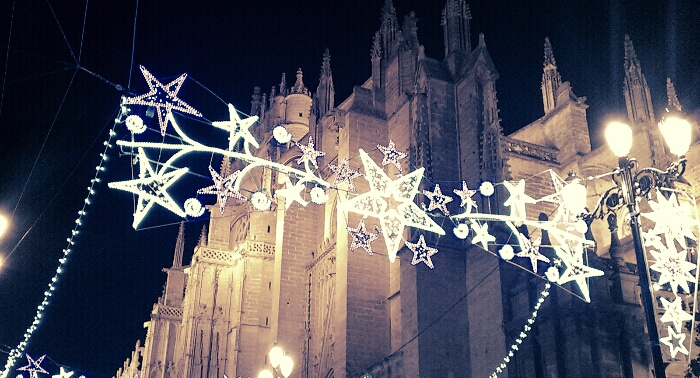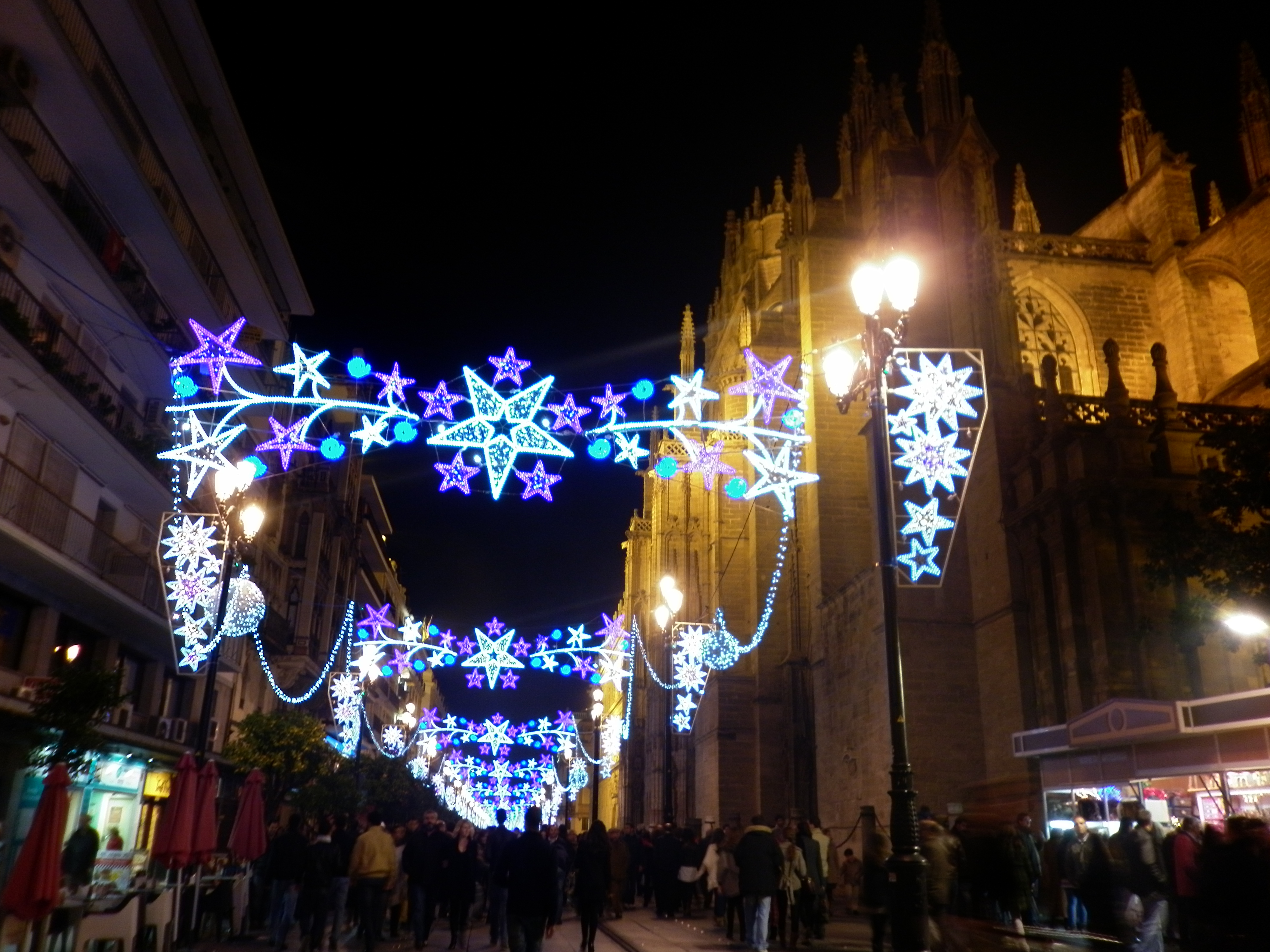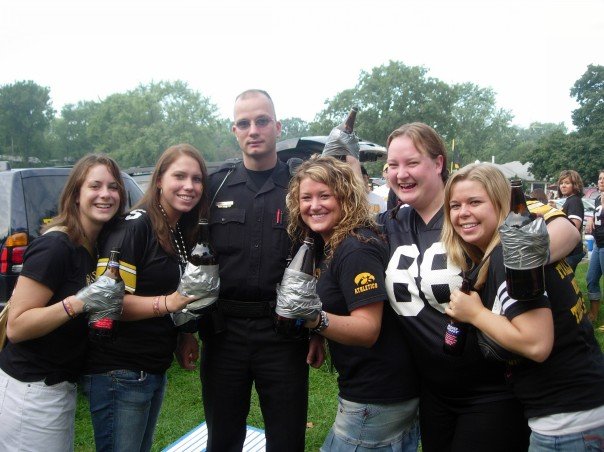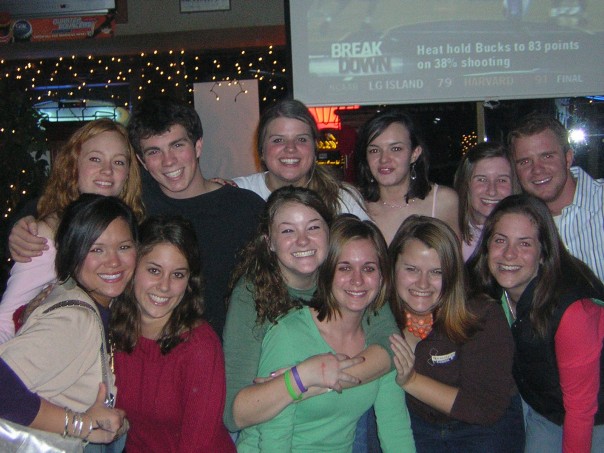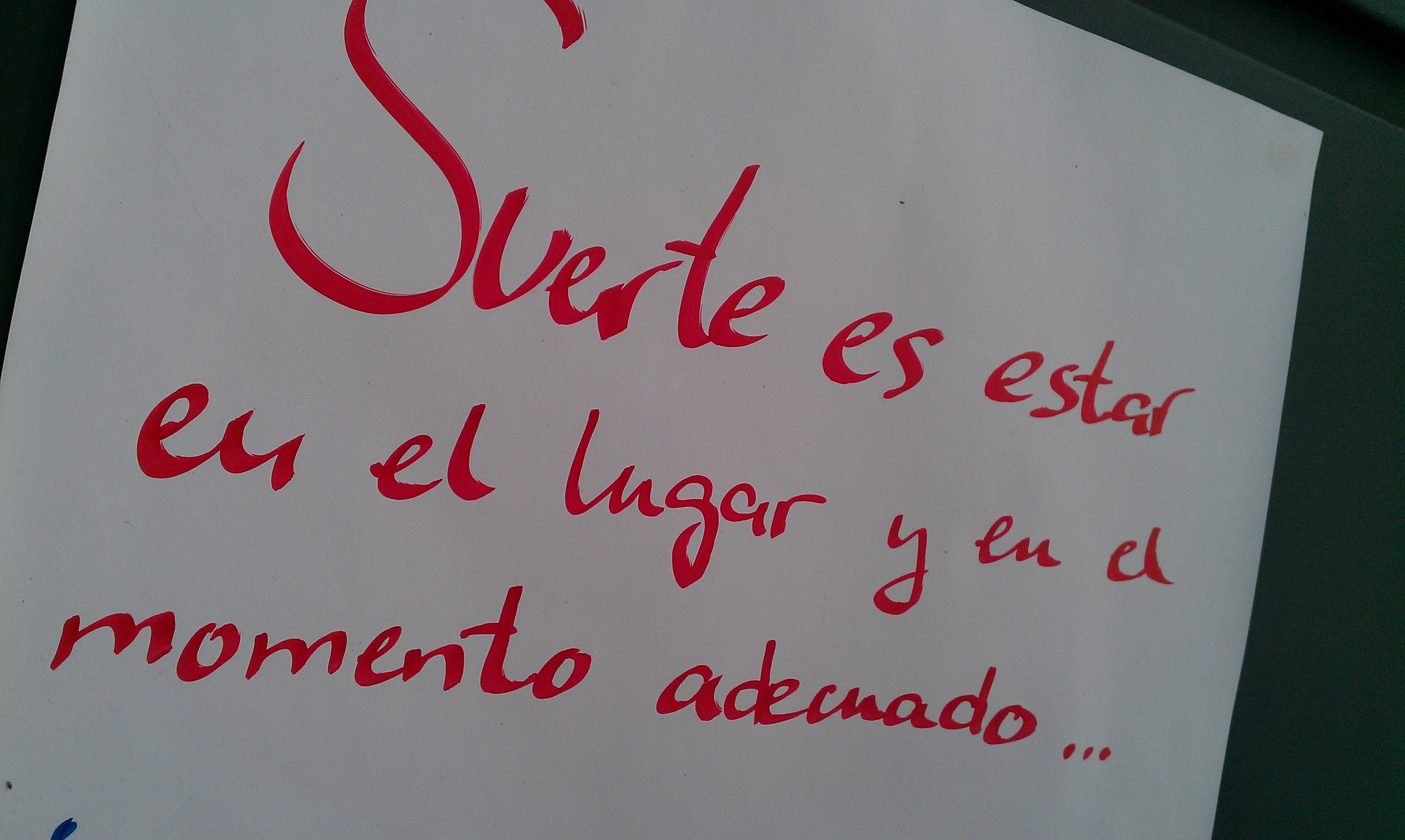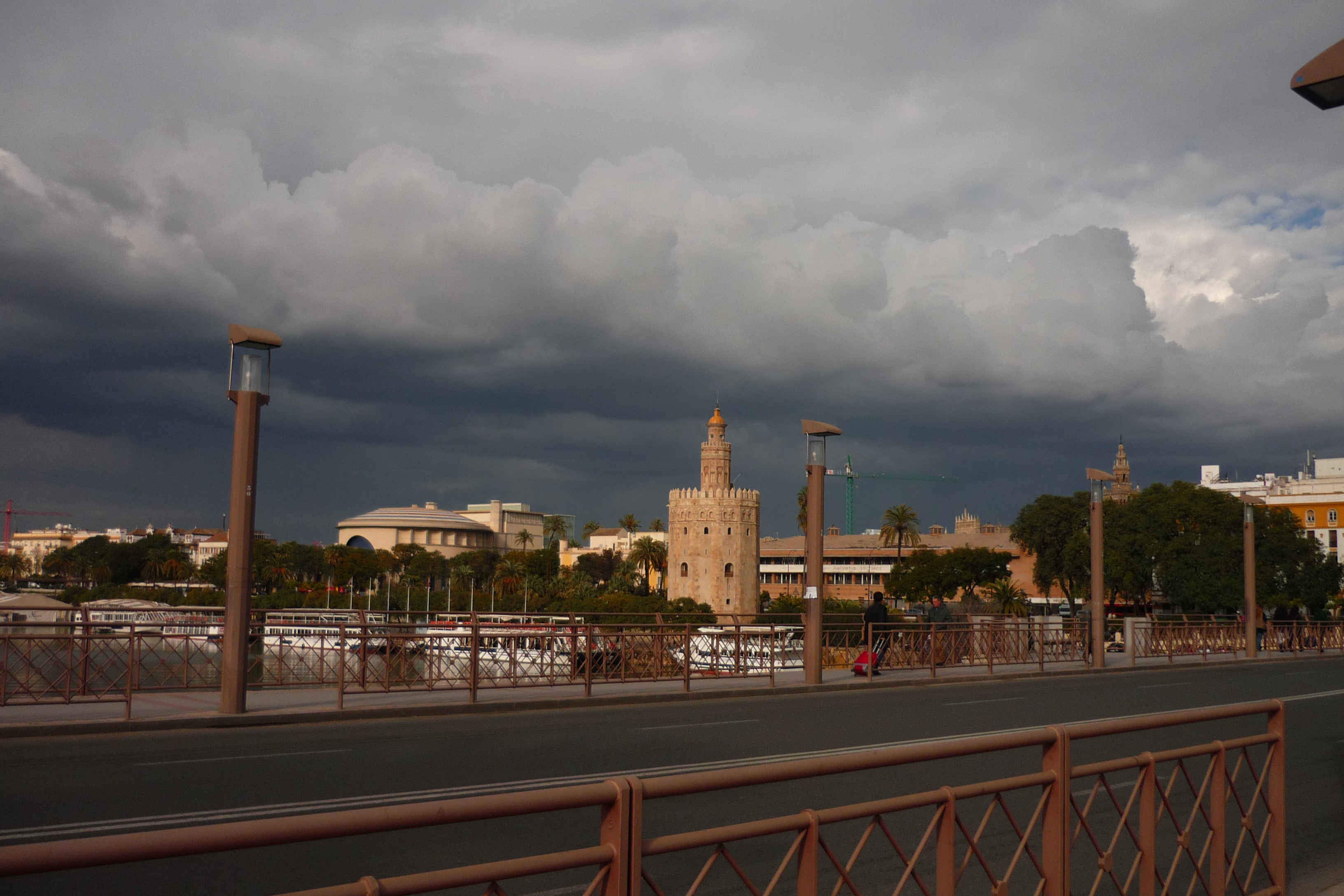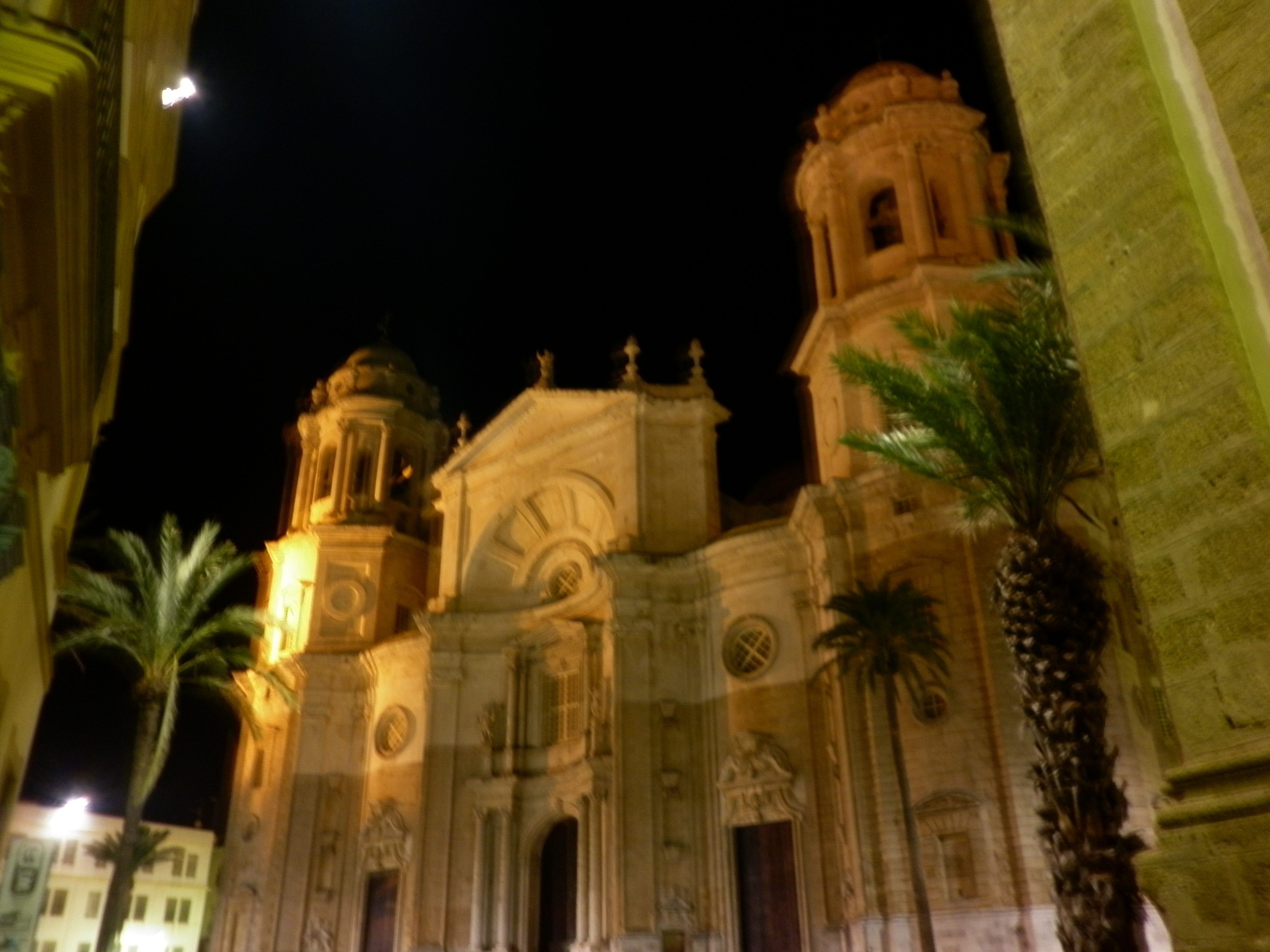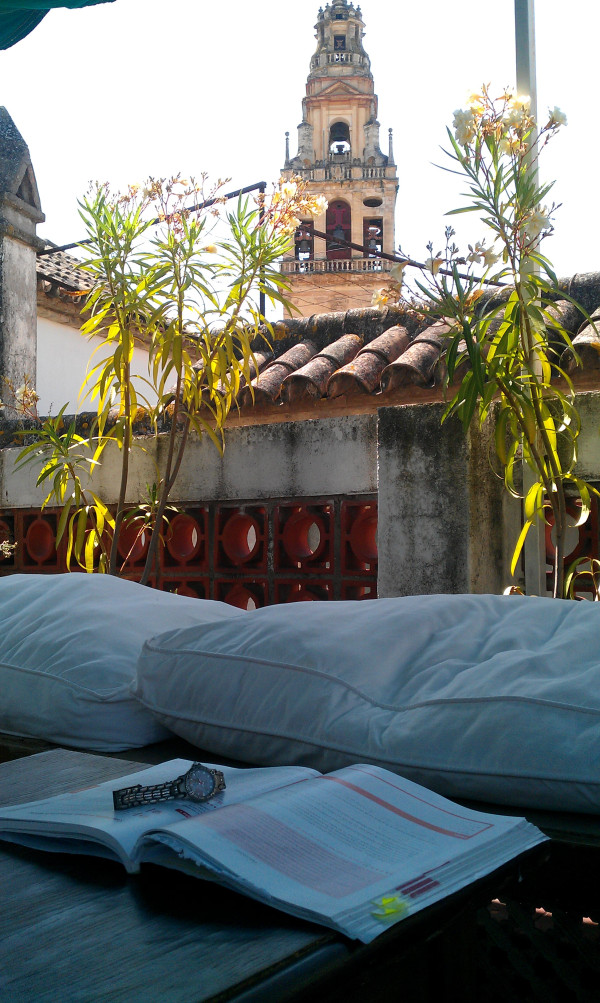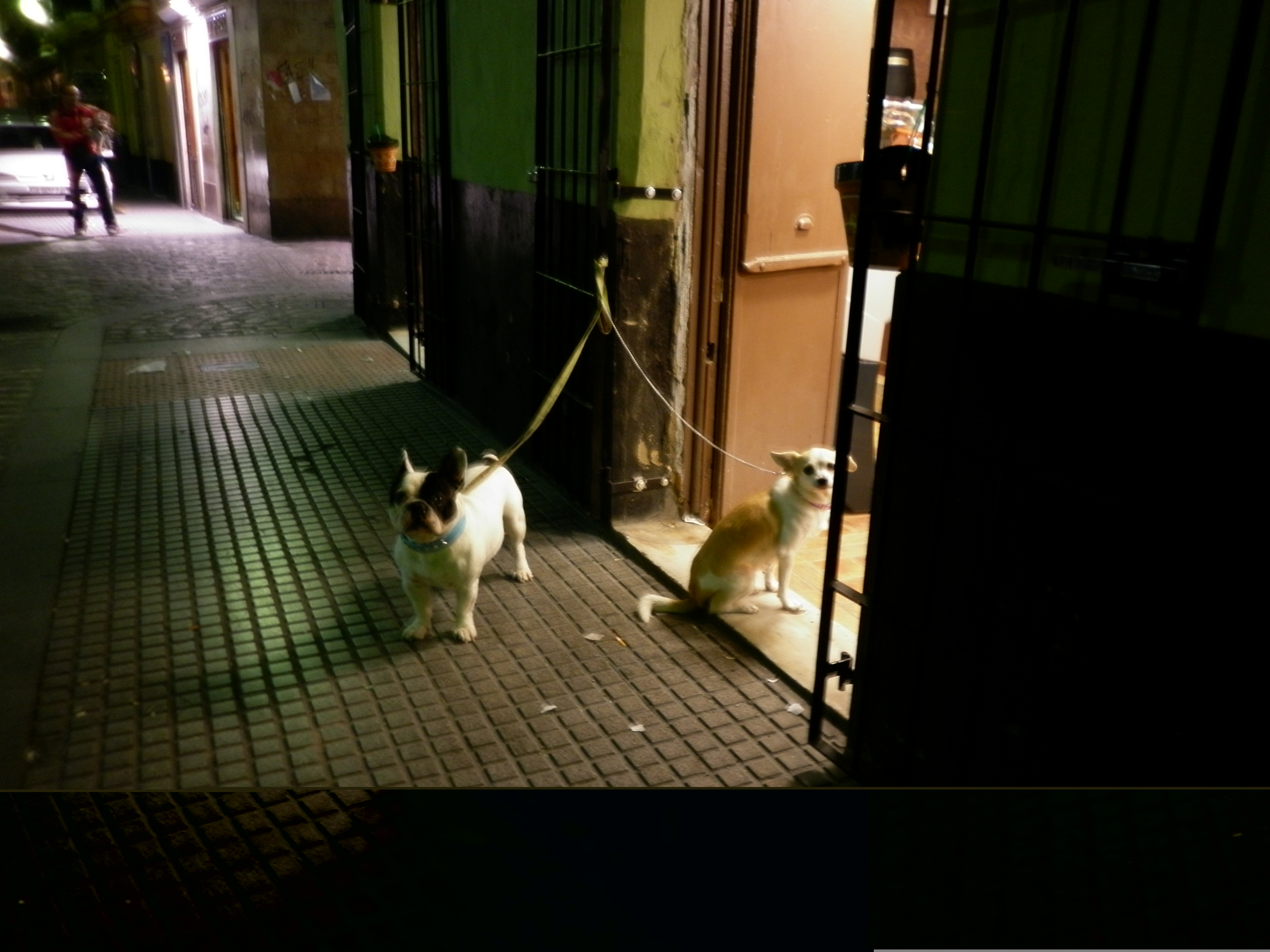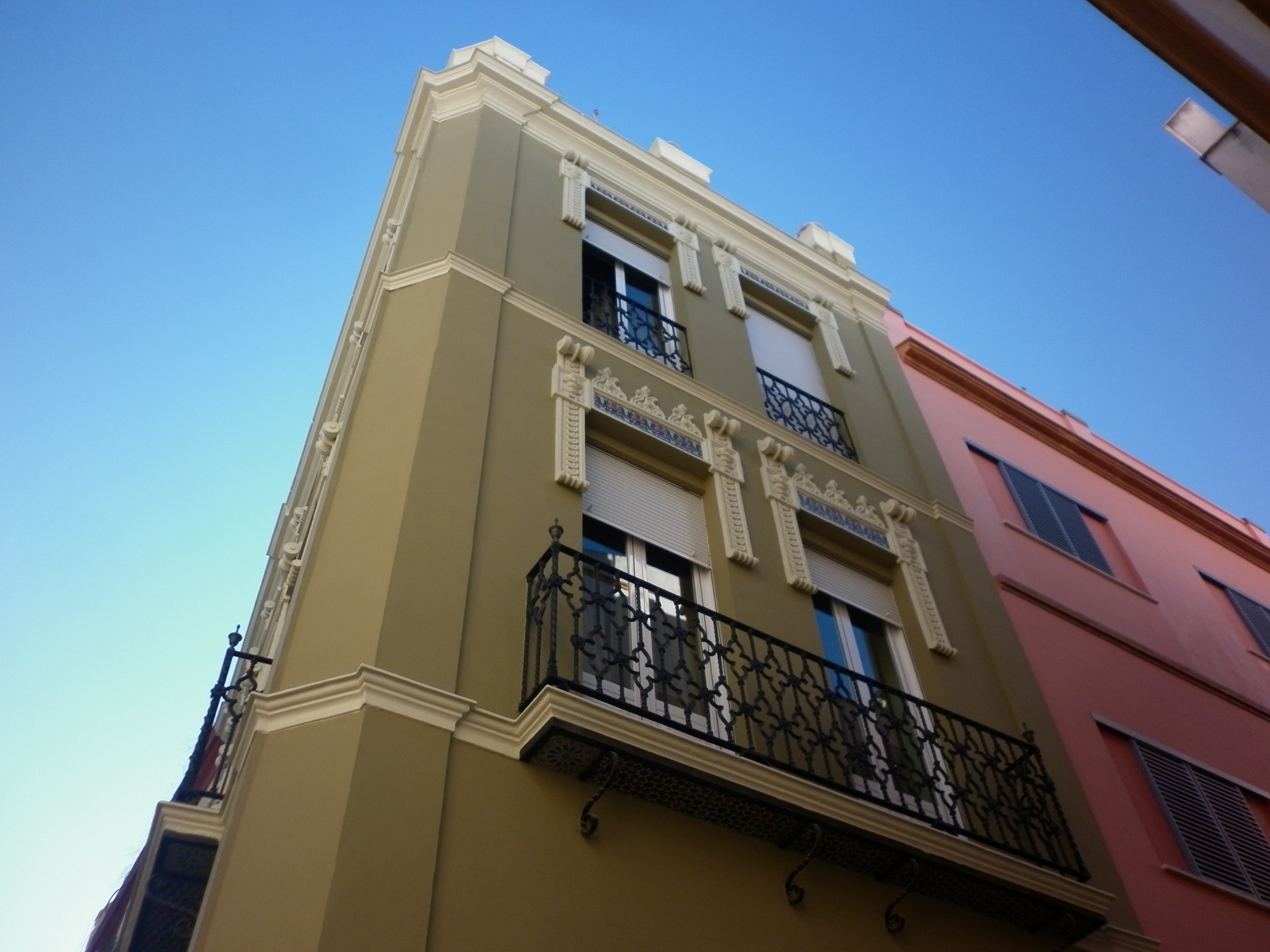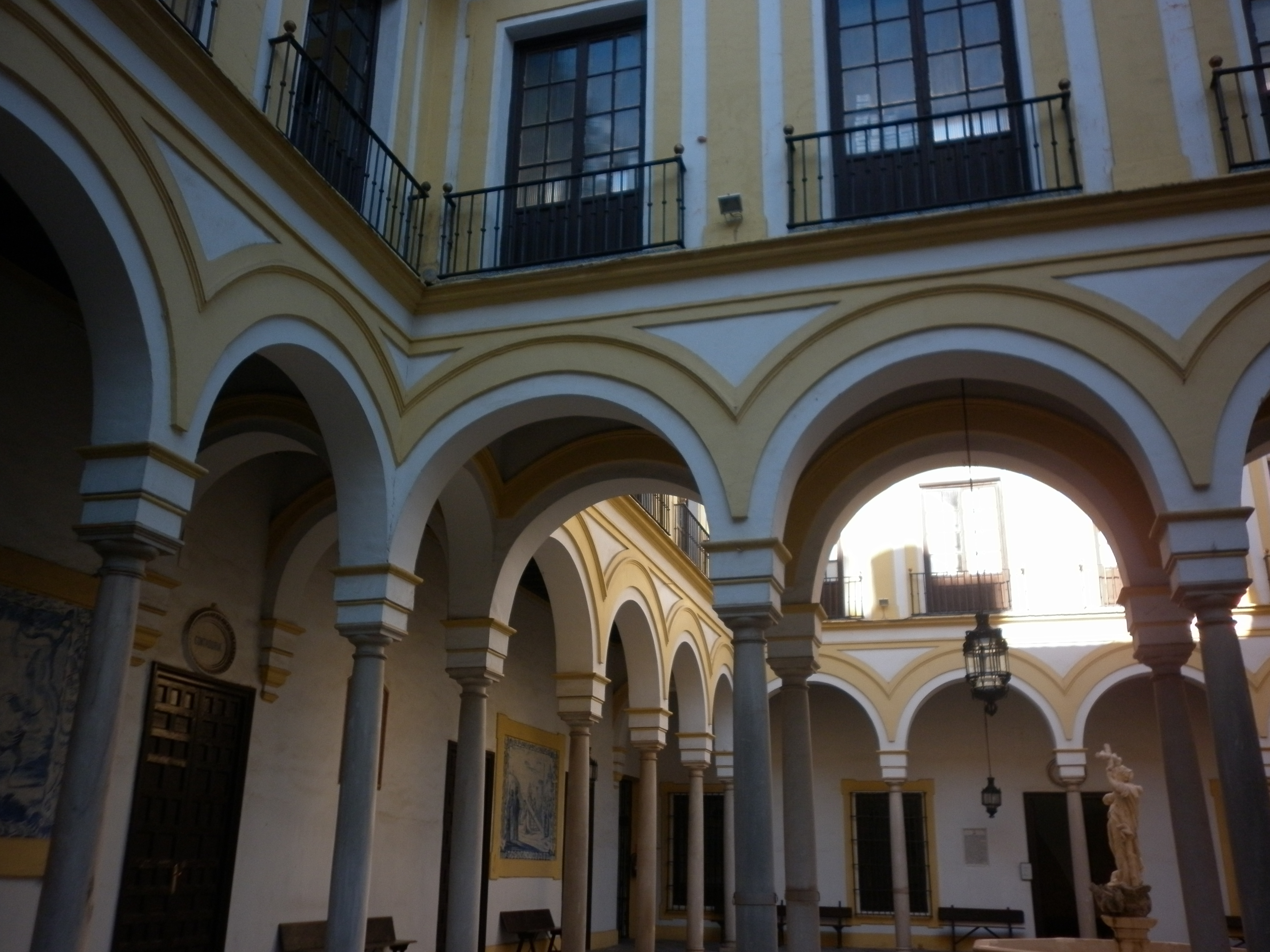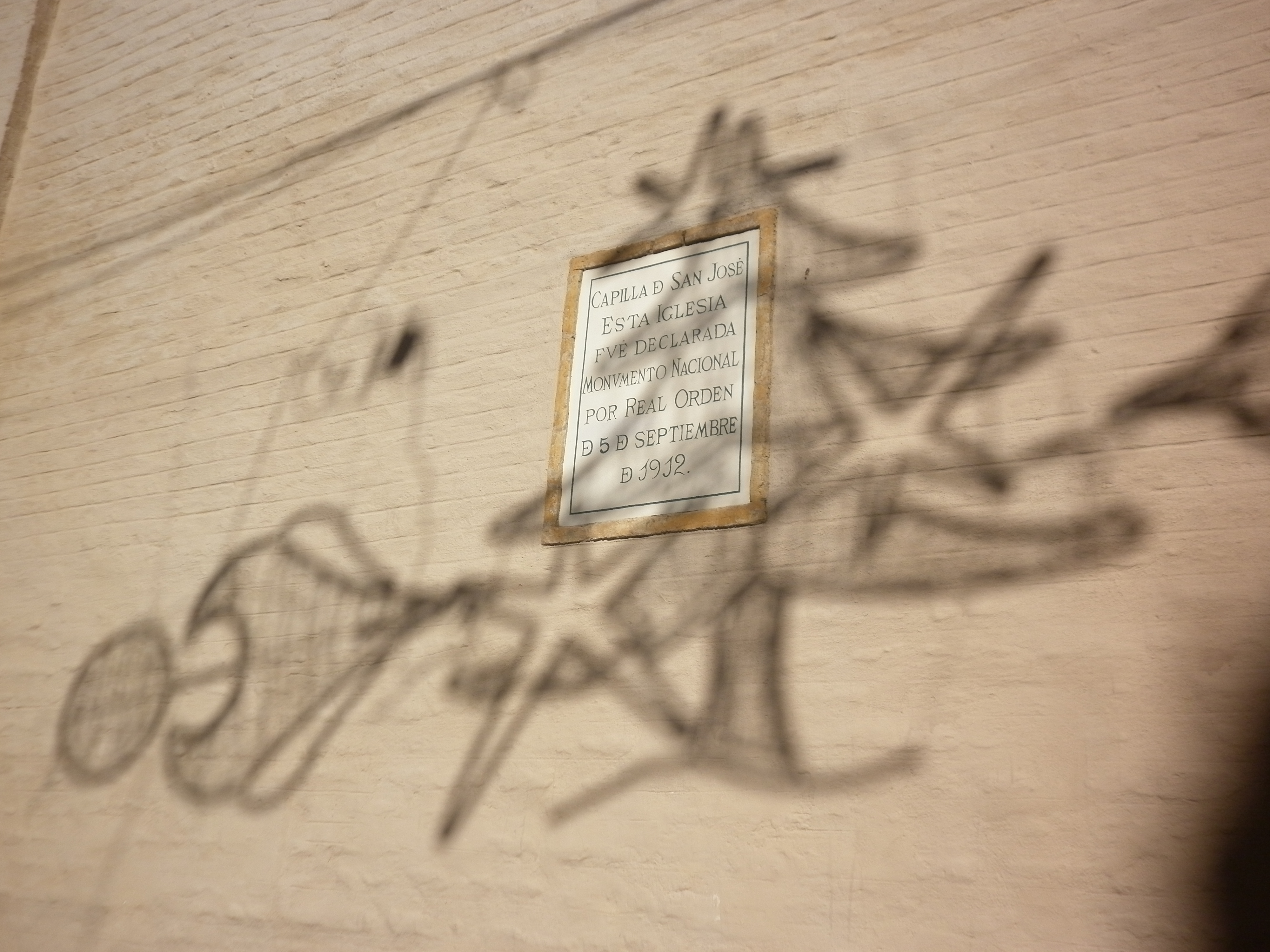I have a lot of “Ooooh Guiri” moments. You know, when I do something SO American, I wonder how I’ve survived four years living outside of the Grand Old Republic. Something along the lines of saying swear words when there are other unknown English speakers around, like drinking in churches at a small town fair (wait, that wasn’t me), like telling a bouncer we didn’t want to go to his bar because it smelled like onions (wait, that wasn’t me either).
En fin, my “Oooh Guiri” moments are like dumb blonde moments.
Today was no exception. Faced with no grading to do, a clean house and a good night’s sleep behind me (grandma!), I chose to being all Christmas-y. My first stop was to Plaza Nueva and the city’s Nativity Scene.
Housed in the salmon-pink palace that dominates the square, the city’s official belén tells the story of the annunciation, birth of Christ and the adoration of the Magi. Using fancy lighting, adobe-looking villages, figurines and constructing the entire town of Bethlehem, the most important moments of young Christ’s life are immortalized. With the diorama comes the line that wraps around the building up towards Plaza del Salvador.
Christa and I had little to do, so we marched towards the camel-ridden zoco in Encarnación before continuing onto an artisan market in a tucked-away plaza in Macarena. I badly needed cash, so my next stop had to be the Ronda Histórica, a busy road that rings the center of the city. The stream of people in front of the home of Sevilla’s most important virgin (oh, and this song) made me scratch my head, so I took out my money, got in line and stood on tip toe to see how much longer I’d have to wait to see baby Jesus again.
Within ten minutes, I had entered the iron gates in the small patio directly in front of the basilica. As one of Seville’s oldest depictions of the Virgin Mother, she’s the patroness of bullfighters and highly revered in Seville. Her procession on Maudy Thursday draws revelers during the wee hours of the morning as she is paraded from her temple along the Ronda to the Cathedral and back. I stated in my bucketlist that I’d like to see her in her basilica, but I happened to choose her feast day to do it. #Ooohguiri
On the right side of the wide, wooden doors, we queued in a perfectly straight line, while others from the hermandad, the term used to describe the religious brotherhoods, passed through the left side. Nuns filled the courtyard, passing cans of Lemon Fanta to several small children in line. I noticed the Virgin was not above the altar in an exalted place as she usually is in other churches. Brothers shouted, “Senores, colaboren con nosotros en la Loteria de Navidad! Decimos a 25 euros!” The Virgen’s distraught face graced the flimsy strips of paper I’d liken to a 50-50 lottery.
I entered the basilica, shivering as I stepped out of the sun, and made the sign of the cross as my Catholic grandmother taught me. As my confirmation saint is Lucia, I spotted her easily and made a mental recollection to find a donation box as I normally do. Girls with piercings and boys in track suits passed by, tears in their eyes. As I passed the small chapels and got closer to the front, I realized the Virgin was on the ground and people were passing in front of her. I had inadvertently come on December 18th, the Feast Day of Su Santísima Virgen de la Esperanza de la Macarena, and was in line to perform the Besamanos, or hand kissing, of the Virgin.
Moral dilemma: Do I kiss the hand of a wooden and cloth statue who I am sworn to dislike because I much prefer the Virgen de la Esperanza de Triana? Or do I look like an asshole and get out of line?
I chose to stay in, already preparing a speech to give Cait over the phone (I’m pretty sure she has an estampilla of La Macarena in her wallet). As we crept closer, her crown of stars and five red roses, a gift from the bullfighter Joey the Little Chicken Joselito el Gallo, came into view and people began weeping. Green gown flowing behind her up the steps to the altar, she stood just a bit taller than I do, but without real legs, I doubt that was her real height.
When it was my turn, toes touching the plush red carpet, I took my place between two altar boys with hair gelled to perfection. The señora in front of me’s lip quivered as she knelt down, kissed one of the only actual parts of the Virgen (most venerated images only have the face, neck, arms and hands, while the rest if a cloth dummy), finishing by making a sign of the cross and having her husband snap a picture.
I looked her dead in the face. She somehow seemed to have a softer expression than the one I’d seen emblazoned on reliefs, azulejos, keychains and tattoos. Her hand was outstretched, and I could see where people had been kissing her for the last 80 years – the plaster had worn right through to the wood. After the señora took her photo, the altarboy wiped down the hand with a damp cloth, and it was my turn.
I left quickly, nearly calling Cait before I’d even crossed the threshold. I didn’t know how to make sense of the whole thing, especially because I consider this whole Semana Santa thing to be a violation of that commandment that says you shouldn’t worship idols, but I couldn’t stop laughing at my Guiri Moment.
Her response to my giggles? “Oh, Jesus Christ. I mean Mother of Jesus Christ.”
